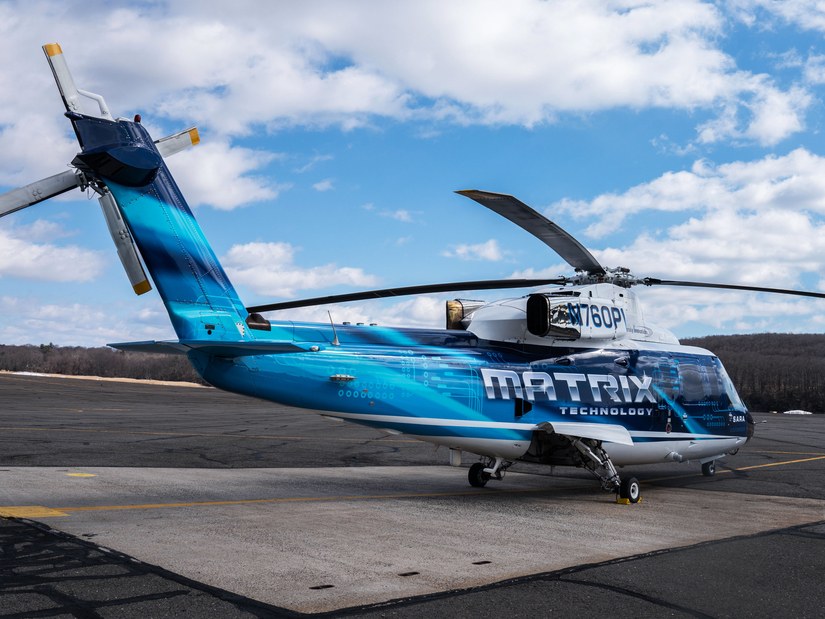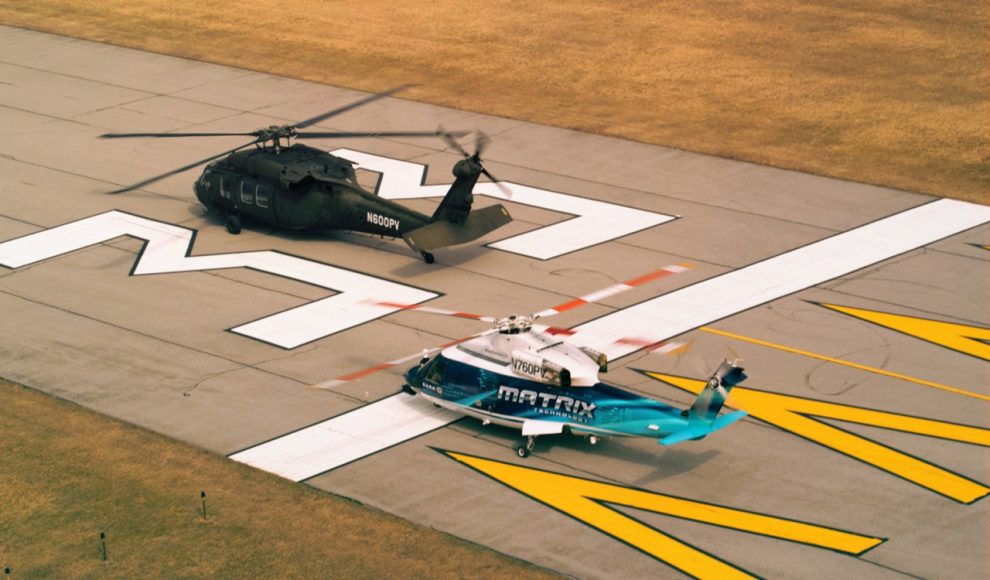Sikorsky held a demonstration of an unmanned helicopter with a man on board

The SARA helicopter (Sikorsky Autonomy Research Aircraft) based on the Sikorsky S-76 with the Matrix Technology autopilot
Sikorsky is considered one of the world leaders in the development of unmanned helicopters. The created set of Matrix Technology systems has reached such a level that within a year the company plans to integrate some functions into the Black Hawk helicopters that it supplies to the army. As in cars, these functions allow you to remove part of the load from the pilot.
In the future, autopilot helicopters are capable of fulfilling a peaceful mission - it will be a flying taxi. Many companies claim ambitions in this area, but Sikorsky without high-profile announcements has developed a fully functional autopilot, which is already working. Recently SARA Robotic Aircraft(Sikorsky Autonomy Research Aircraft) took the journalist Wired - he shared his impressions .
The event turned out to be rather boring: take-off, hovering, turning, maneuvering around the airport, flying, landing at a specified point at a distance of about 16 km. The only unusual circumstance was that there was no one except the journalist in the booth. That is, Sikorsky conducted tests with a living passenger - and successfully.

In these tests, external radio control was absolutely not involved, that is, the automatic helicopter systems performed 100% of the tasks on their own. In addition to maneuvers, during the flight they constantly scanned the surrounding area, fixing trees, power lines, birds and other air transport.
However, passenger transportation is unlikely to be the first use of such an autopilot. In addition to military applications, a range of industrial and commercial tasks is obvious, on which it is logical to concentrate in the first place. In fact, these are the tasks that multicopters are now trying to solve with varying success. For example, transportation of goods, patrolling gas and oil pipelines, etc. An unmanned helicopter is much more functional than a conventional multicopter. It can be used, for example, in search and rescue missions. And yes, sooner or later the technology will still grow to the level of passenger traffic. Sikorsky, which Lockheed Martin acquired in 2015, recently officially announced that it is entering the race to develop an unmanned city taxi. According to the company, the Matrix system is already able to control flying cars,
A Wired journalist describes a flight from a passenger’s perspective. He was given a tablet, which in real time shows the location of the helicopter on satellite maps Google Maps and offers several commands. You can download a prepared mission or simply indicate a place on the map and enter your speed and altitude settings. The computer is located here in the cockpit, it is squeezed into a corner behind the pilot's seat and is surrounded by a large number of test equipment. Having received the destination, he calculates the best route. Passenger Presses Execute Button - the helicopter takes off and leaves the route. Inertial guidance systems and GPS conduct it in the air, and external sensors, including lidar and cameras, track obstacles. They are in constant search of potential landing sites, if something goes wrong.
As in Tesla cars, to transfer control to yourself, just start working with the control. In this case, if you take the helm, the autonomous system is turned off. When the pilot releases his hand, the computer again takes control. This is a two-way reservation: the helicopter is always ready to take control of the pilot, and the pilot can always take control of the computer.
Especially for the inexperienced passenger-pilot, special controls have been developed: two control insect-interceptors on the sides of the seat. They are implemented approximately as in a computer game: the right joystick for horizontal movements (forward-backward, left-right), and the left lever is responsible for throttling and yaw (that is, rotation around its axis). For the layman, such a “game” control will seem simpler and more understandable than the four standard controls in the pilot's seat.
During testing, the SARA helicopter (Sikorsky Autonomy Research Aircraft) proved to be a responsive and predictable machine. Easy to manage. If you go at low speed below five knots and release the helm, the helicopter will freeze in place. If you go at a speed of more than five knots and release the helm - SARA will continue to move in the same direction at the same speed.
The autopilot development program is led by Igor Cherepinsky. In a Wired commentary, he said that in the future the control system will be simplified, so that any housewife can easily control a helicopter. This will be relevant when air taxis begin to run around the cities.
